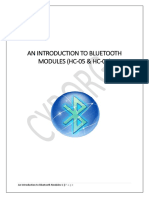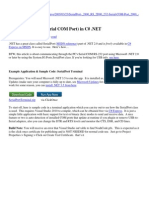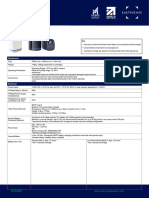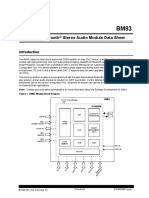0% found this document useful (0 votes)
90 views11 pagesStm32f767 With HC05 Bluetooth Module Tutorial
This document provides a detailed guide on connecting an STM32F767 Nucleo board to an HC-05 Bluetooth module for wireless serial communication. It includes hardware setup instructions, configuration steps using STM32CubeIDE, application code for data exchange, and testing procedures to ensure successful communication. The tutorial emphasizes the importance of matching baud rates and includes troubleshooting tips for setting up the HC-05 module.
Uploaded by
Gizem AteşCopyright
© © All Rights Reserved
We take content rights seriously. If you suspect this is your content, claim it here.
Available Formats
Download as DOCX, PDF, TXT or read online on Scribd
0% found this document useful (0 votes)
90 views11 pagesStm32f767 With HC05 Bluetooth Module Tutorial
This document provides a detailed guide on connecting an STM32F767 Nucleo board to an HC-05 Bluetooth module for wireless serial communication. It includes hardware setup instructions, configuration steps using STM32CubeIDE, application code for data exchange, and testing procedures to ensure successful communication. The tutorial emphasizes the importance of matching baud rates and includes troubleshooting tips for setting up the HC-05 module.
Uploaded by
Gizem AteşCopyright
© © All Rights Reserved
We take content rights seriously. If you suspect this is your content, claim it here.
Available Formats
Download as DOCX, PDF, TXT or read online on Scribd
/ 11






















































































